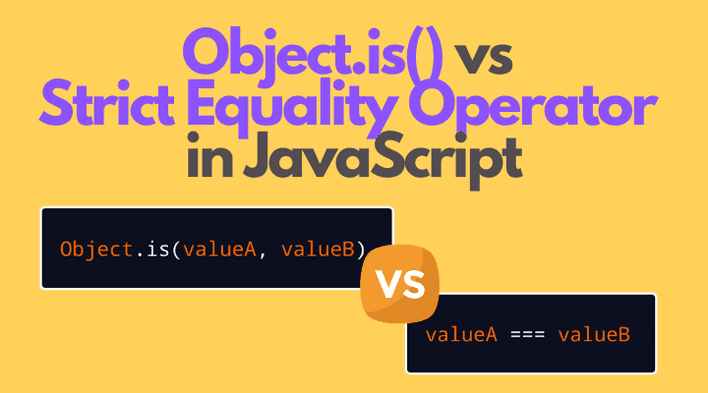The triple equality operator === checks strictly whether 2 values are the same:
1 === 1; // => true1 === '1'; // => false1 === true; // => false
However, ES2015 specification brings Object.is(), which behaves almost same way as strict equality operator:
Object.is(1, 1); // => trueObject.is(1, '1'); // => falseObject.is(1, true); // => false
The main question is: when would you use Object.is() instead of a strict equality check? Let's find out.
1. Strick equality check operator
To begin with, let's refresh quickly how the strict equality operator works.
The strict equality check operator evaluates to true when both values are of the same type and hold the same value.
For example, the following primive values are equal because they're the same type and have the same value:
1 === 1; // => true'abc' === 'abc'; // => truetrue === true; // => truenull === null; // => trueundefined === undefined; // => true
The strict equality operator doesn't perform type coersion of operators. Even if operators hold reasonable same values, but nevertheless of different types, they aren't strictly equal:
1 === '1'; // => false1 === true; // => falsenull === undefined; // => false
When performing the strict equality check on objects, an object is strictly equal only to itself:
const myObject = { prop: 'Value' };myObject === myObject; // => true
Even if 2 objects have exactly the same properties and values, they're different values:
const myObject1 = { prop: 'Value' };const myObject2 = { prop: 'Value' };myObject1 === myObject2; // => false
The above comparison scenarios work exactly the same in Object.is(valueA, valueB).
The difference between strict equality check and Object.is() lies in how NaN and how negative zero -0 are treated.
Firstly, NaN (Not A Number) isn't strictly equal to any other value, even with another NaN:
NaN === NaN; // => falseNaN === 1; // => false
Secondly, the strict equality operator doesn't distinguish -0 from +0:
-0 === +0; // => true
The strict equality operator uses the Strict Equality Comparison algorithm.
2. Object.is()
Object.is(valueA, valueB) checks the arguments for equality the same way as the strict equality operator, but with the 2 differences.
Firstly, NaN equals to another NaN value:
Object.is(NaN, NaN); // => trueObject.is(NaN, 1); // => false
Secondly, Object.is() makes the distinction between -0 and +0:
Object.is(-0, +0); // => false
Object.is(), in contrast to strict equality operator, uses Same Value Comparison algorithm.
3. Summary
In most of the situations, the strict equality operator is a good way to compare values.
If you'd like to check directly for NaN values or make a more strict distinction between negative and positive zeros, then Object.is() is a good choice.
Also Object.is() is useful as a functional way to compare values, for example in functional programming.


